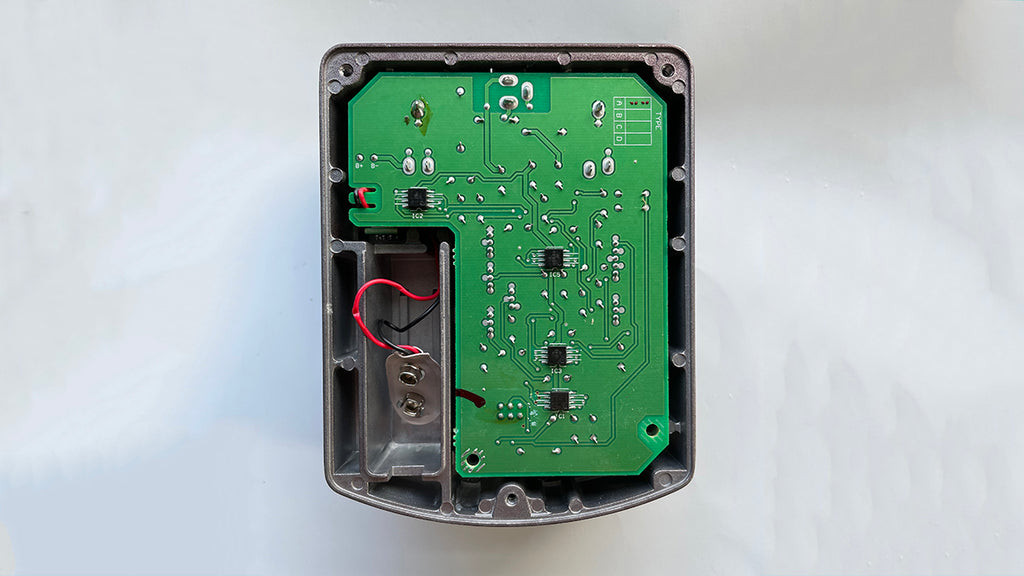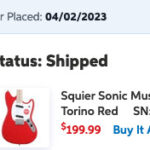For guitar players venturing into the vast landscape of effects pedals, certain names and brands immediately spring to mind. Giants like Boss, MXR, and Electro-Harmonix, with their legacies of innovation and iconic sounds, rightly occupy a significant space on pedalboards and in gear discussions. These companies have consistently delivered pedals that have shaped genres and inspired generations of musicians.
However, digging deeper into the world of guitar effects reveals a treasure trove of unique and often overlooked gems from various manufacturers. Every brand, regardless of its overall fame, usually has at least one pedal that stands out, offering something special to discerning ears. Think of Snarling Dogs and their Mold Spore, or DOD with the Swell – pedals that, while not always mainstream, have earned cult followings for their distinctive character. In this spirit of uncovering hidden gems, it’s time to shine a spotlight on the Zoom Ultra Fuzz, a pedal that deserves far more recognition than it often receives in discussions about Zoom Guitar Pedal offerings.
Zoom, a company undeniably present in the guitar community for decades, often surprises those who delve into their broader product catalog. Beyond guitar effects, Zoom’s diverse portfolio includes field recorders, audio interfaces, and various other audio tools, showcasing a wide-ranging approach to audio technology.
 Zoom Ultra Fuzz
Zoom Ultra Fuzz
Yet, within the guitar effects realm, Zoom has consistently demonstrated ambition, right from their early days. Their initial lineup of seven pedals boldly carried the label “advanced,” a testament to their forward-thinking approach, even if some of the product names themselves were somewhat generic (the “Advanced Sound Environment Processor” being a notable exception with its intriguing name).
Despite the “advanced” moniker, a peculiar anachronistic aesthetic permeates much of Zoom’s guitar pedal design. This, coupled with a certain enigmatic aura surrounding the company’s history, often makes accurately dating their products a challenge. For instance, Zoom’s very first standalone guitar pedal, the Power Driver, possesses a visual vibe that suggests a mid-1980s origin, yet it actually debuted in 1992. Following closely behind was the Zoom Choir in 1993, another intriguing pedal deserving of its own exploration.
This brings us to the focus of today’s exploration: the Ultra Fuzz. A name brimming with superlatives, the Ultra Fuzz sports a look that might lead one to believe it emerged from the mid-1990s. However, its actual release year was 2001. In fact, upon retrieving it, even a colleague mistook it for a product of 1995. This 2001 launch date places the Ultra Fuzz amidst a particular rumor, one that we’ll gladly address and debunk.
The Ultra Fuzz truly lives up to its name, offering a wide spectrum of sonic textures through its versatile controls. Each knob interacts distinctly, shaping a unique fuzz character that demands a player’s nuanced touch and careful manipulation. The pedal’s manual, somewhat unusually, emphasizes factors like 9-volt battery composition, cable quality, and signal chain placement, indicating a sensitivity reminiscent of vintage fuzz circuits. Much like many classic fuzz pedals, the Ultra Fuzz exhibits significant interaction with the guitar’s volume knob, and crucially, it’s optimized for guitars equipped with passive pickups. According to the manual (page 9), active pickups are simply not the ideal match for this pedal’s circuit.
 Zoom Ultra Fuzz
Zoom Ultra Fuzz
The “Reso” control on the Ultra Fuzz is essentially a feedback generator, injecting controlled oscillation into the signal path. This creates a seamless, almost synthesizer-like drone that blends with the notes you play, resulting in a velvety, glissando-rich texture. Zoom even suggests using your guitar’s controls to sculpt this electronic purr into something resembling a Theremin. The Ultra Fuzz is indeed capable of these sonic explorations. It’s truly deserving of the “ultra” in its name.
However, the Ultra Fuzz isn’t a plug-and-play affair. It demands a degree of patience and experimentation. Initial setup can be a bit perplexing, potentially yielding no sound at all across various settings. In some ways, it operates almost as an instrument in itself, requiring a certain level of understanding and proficiency to unlock its full potential. This description might sound familiar to those acquainted with the Z. Vex Fuzz Factory, a modern fuzz classic renowned for its interactive and sometimes unpredictable nature.
Released around 1995, the Fuzz Factory gained considerable prominence around the same time the Ultra Fuzz was introduced. This timing unfortunately cast a shadow over the Zoom pedal. Whispers circulated in gear circles, unfairly comparing the Ultra Fuzz to the Fuzz Factory, with some even labeling it a blatant clone.
Due to its relatively short time in the spotlight, this unfounded rumor never truly dissipated. Let’s set the record straight: the internal design of the Ultra Fuzz is definitively not a Fuzz Factory clone. The Fuzz Factory utilizes a relatively simple circuit with just 13 components, including two germanium transistors. In stark contrast, the Ultra Fuzz boasts a densely populated circuit board filled with surface mount devices, and notably, not a single germanium component in sight. Circuit topology-wise, they share virtually no similarities.
In conclusion, the Zoom Ultra Fuzz stands as a potent, dynamic, and compelling piece of guitar equipment that deserves a place on more pedalboards. While some of Zoom’s other pedal offerings might be considered less inspiring (with exceptions like the Choir and a few others), they undeniably hit a home run with the Ultra Fuzz. It’s a pedal that punches far above its weight and deserves to be recognized as a unique and powerful voice in the world of fuzz.

